Census.gov > Library > Infographics & Visualizations > 2013 > HIV/AIDS Impact in Africa
Library
Figure 1. Total Population and Population Missing Due to HIV/AIDS Epidemics: 2012
Selected Countries in Sub-Saharan Africa
November 29, 2013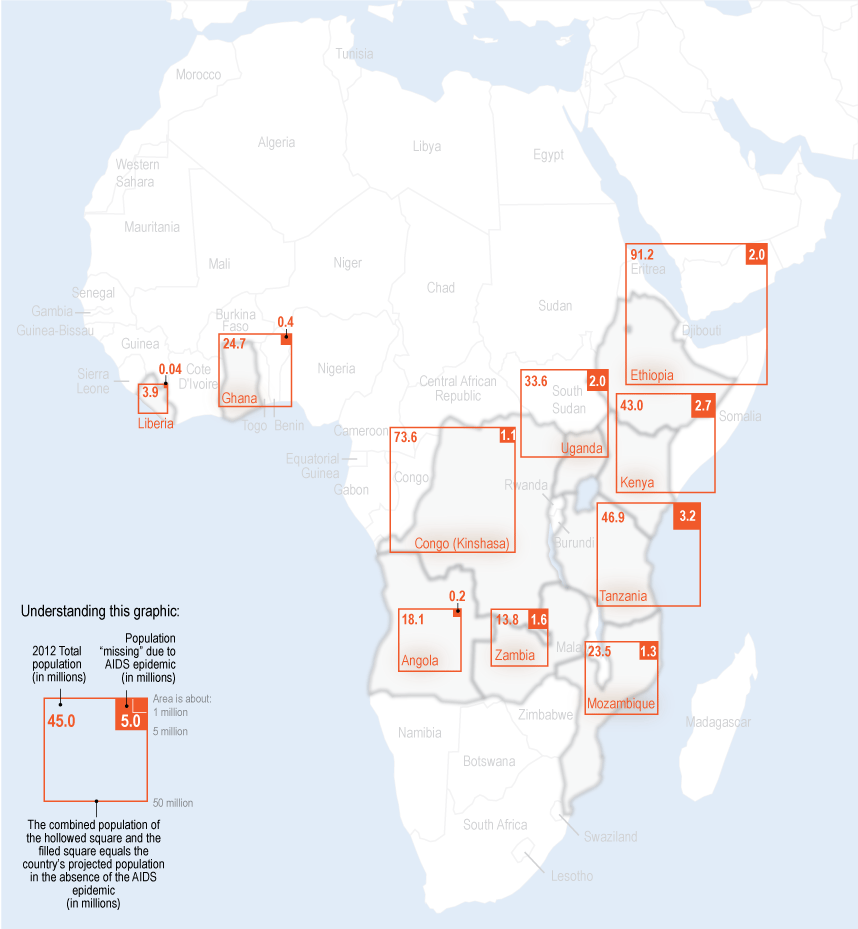
The HIV/AIDS pandemic has impacted the populations of many African countries. Ten countries in Africa with recent population projections were selected for Figures 1 and 2. These countries have suffered the combined loss of more than 14.5 million people. The scales of the epidemics vary, with some countries more heavily impacted than others. The population missing due to HIV/AIDS represents nearly 12 percent of Zambia's current population.
SOURCE: U.S. Census Bureau,
International Data Base, and unpublished tables
NOTE: The graph compares a 2012 population estimate for a country to a "Without-AIDS" scenario that reflects a hypothetical population that would have resulted if the country had never been affected by an AIDS epidemic. The "missing population" is the difference between these two estimates. The 2012 country population estimates and the hypothetical "Without-AIDS" scenarios are the results of modeling produced by the U.S. Census Bureau.
Figure 2. Population Missing Due to HIV/AIDS Epidemics, by Sex: 2012
Selected Countries in Sub-Saharan Africa

Differences in mortality patterns by age and sex result in some populations more heavily impacted than others. Females represent more than half of the missing population in the selected countries, and 65 percent in Uganda.
SOURCE: U.S. Census Bureau, International Data Base, Population Estimates Program, and unpublished tables.
NOTE: This graph is derived from a comparison of the 2012 population estimate for a country to a "Without-AIDS" scenario that reflects a hypothetical population that
would have resulted if the country had never been affected by an AIDS epidemic. The "missing population" is the difference between these two estimates. The U.S. state; Defiance, OH micropolitan statistical area; and Prescott, AZ and Springfield, MO metropolitan statistical area population estimates are for 2012.
Recent Data Visualizations
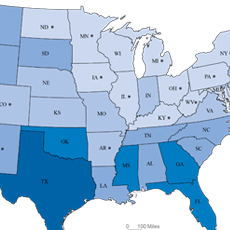 Population Without Health Insurance
Population Without Health Insurance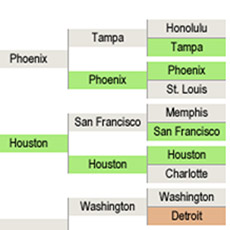 Population Bracketology
Population Bracketology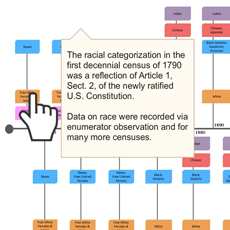 Measuring Race and Ethnicity Across the Decades: 1790-2010
Measuring Race and Ethnicity Across the Decades: 1790-2010 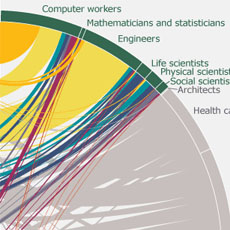 Where do college graduates work?
Where do college graduates work? Story Maps Illustrate Population Change
Story Maps Illustrate Population Change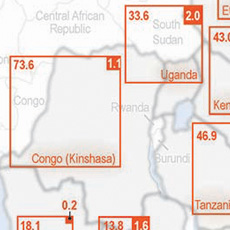 HIV/AIDS Impact in Africa
HIV/AIDS Impact in Africa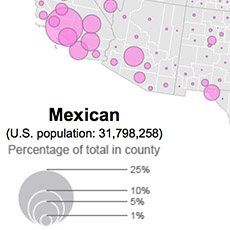 Distribution of Hispanic or Latino Population by Specific Origin: 2010
Distribution of Hispanic or Latino Population by Specific Origin: 2010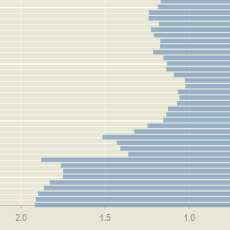 A Century of Population Change in the Age and Sex Composition of the Nation
A Century of Population Change in the Age and Sex Composition of the Nation 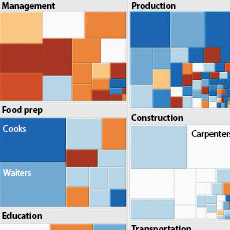 Shifting Occupational Shares
Shifting Occupational Shares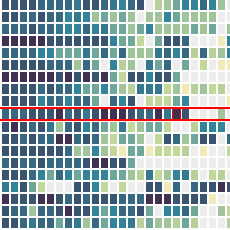 Metro Area Density
Metro Area Density Work-Life Earnings
Work-Life Earnings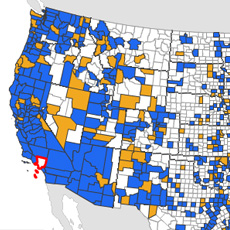 Census Flows Mapper
Census Flows Mapper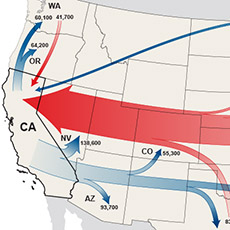 Migration Between Calif. & Other States
Migration Between Calif. & Other States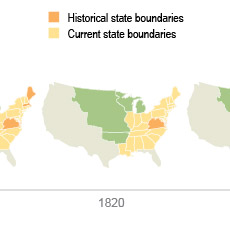 U.S. Territory and Statehood Status
U.S. Territory and Statehood Status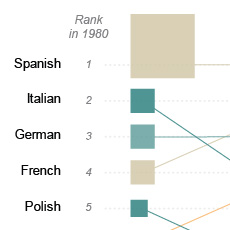 Spoken Languages Other than English
Spoken Languages Other than English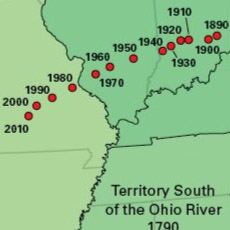 Center of Population, 1790-2010
Center of Population, 1790-2010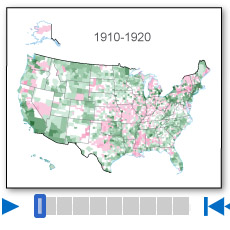 Population Change by Decade
Population Change by Decade Without A High School Education
Without A High School Education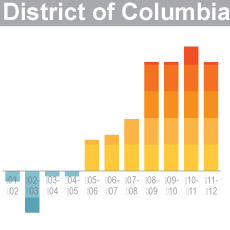 A Decade of State Population Change
A Decade of State Population Change State-to-State Migration for States of 8 Million or More
State-to-State Migration for States of 8 Million or More Population Under 5 Years Old by Congressional District
Population Under 5 Years Old by Congressional District Components of Metro Area Change
Components of Metro Area Change Blooming States
Blooming States Coastline County Population
Coastline County Population Coastline County Population
Coastline County Population I-90 Population Density Profile, 2010
I-90 Population Density Profile, 2010 Second Cities: Keeping Pace with a Booming New York
Second Cities: Keeping Pace with a Booming New York By the Grid: Population Shift to the West and South
By the Grid: Population Shift to the West and South I-10 Population Density Profile, 2010
I-10 Population Density Profile, 2010 Booming Cities Decade-to-Decade, 1830-2010
Booming Cities Decade-to-Decade, 1830-2010 I-5 Population Density Profile, 2010
I-5 Population Density Profile, 2010 Islands of High Income
Islands of High Income The Great Migration, 1910 to 1970
The Great Migration, 1910 to 1970 Following the Frontier Line, 1790 to 1890
Following the Frontier Line, 1790 to 1890 Changing Ranks of States by Congressional Representation
Changing Ranks of States by Congressional Representation Cartograms of State Populations in 1890, 1950, and 2010
Cartograms of State Populations in 1890, 1950, and 2010 Before and After 1940: Change in Population Density
Before and After 1940: Change in Population Density From Physical to Political Geography
From Physical to Political Geography Differential City Growth Patterns
Differential City Growth Patterns I-95 Population Density Profile
I-95 Population Density Profile Increasing Urbanization
Increasing Urbanization Gaining and Losing Shares
Gaining and Losing Shares Top 20 Cities
Top 20 Cities
 The Great Migration, 1910 to 1970
The Great Migration, 1910 to 1970
 Following the Frontier Line, 1790 to 1890
Following the Frontier Line, 1790 to 1890 Chang
Chang